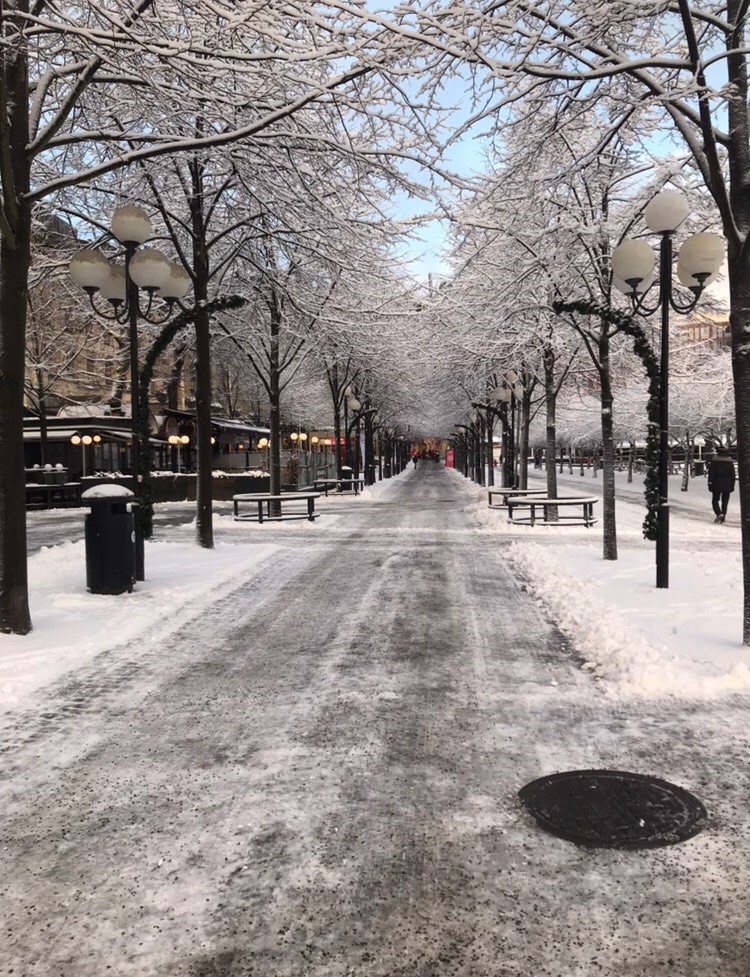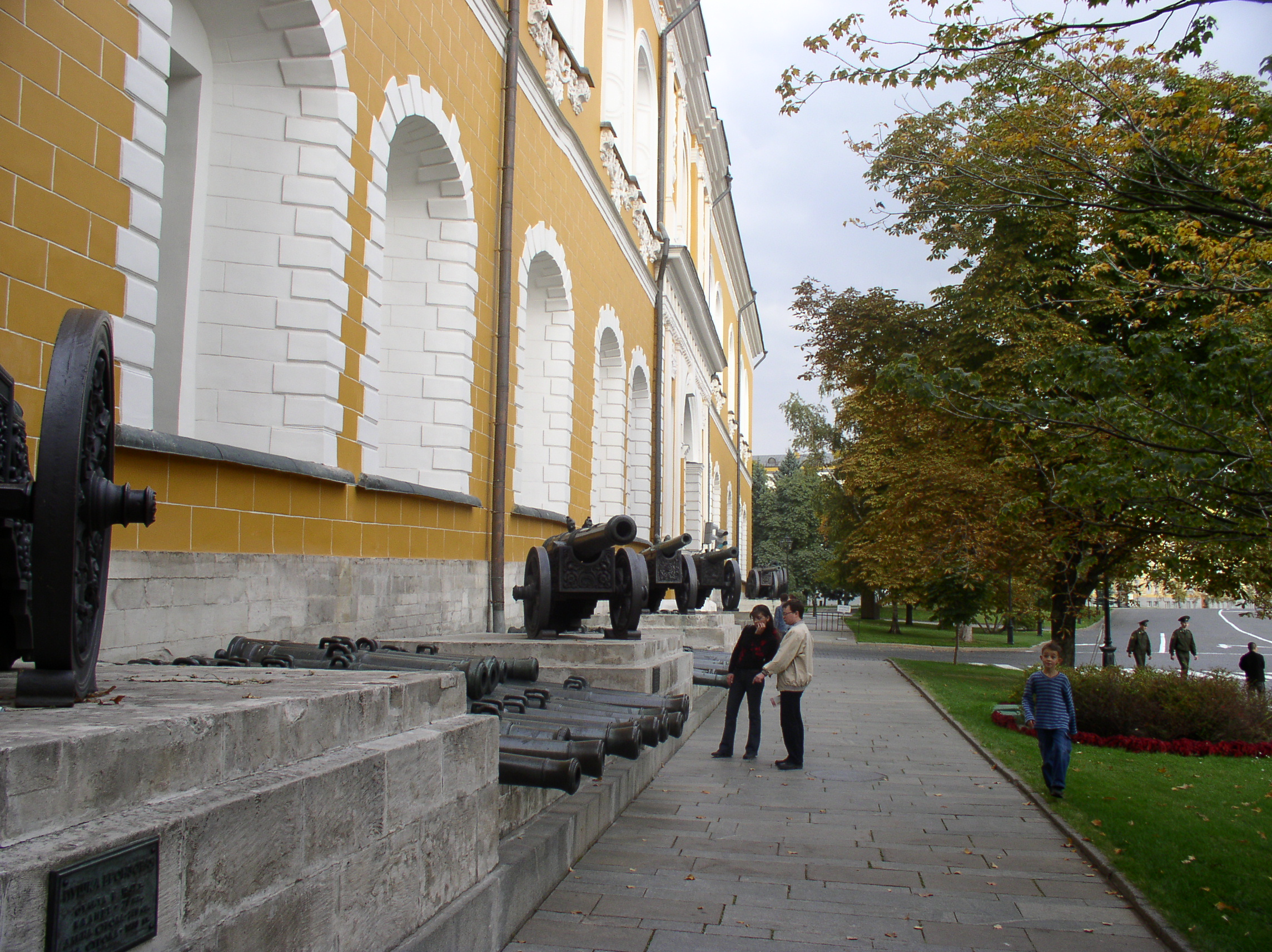|
Makalös
Makalös (unequalled) was the colloquial name for the grand mansion, or palace, of the Swedish noble family De la Gardie. Situated at Norrström, south of Kungsträdgården in Stockholm and vis-à-vis the Stockholm Palace, Royal Palace, the building was completed in 1653 and demolished in 1825 after a fire. Construction Construction of the mansion was begun in the 1630s on a piece of land owned by Jakob De la Gardie. De la Gardie tasked Hans Jacob Kristler with the construction. The five-floor building was built of brick and stone with a copper roof. The living quarters were situated in the ground floor, the festivities hall on the second (piano nobile), dancing and music rooms on the third, and stores and armoury on the fourth and fifth floors. The cellar comprised larders, while housekeeping facilities, stables and gardens were situated outside the main building. Four towers marked the corners of a facade richly decorated with stone masonry and adorned with bay windows and col ... [...More Info...] [...Related Items...] OR: [Wikipedia] [Google] [Baidu] |
Kungsträdgården
Kungsträdgården (Swedish language, Swedish for "King's Garden") is a park in central Stockholm, Sweden. It is colloquially known as ''Kungsan''. The park's central location and its outdoor cafés makes it one of the most popular hangouts and meeting places in Stockholm. It also hosts open-air concerts and events in summer, while offering an ice rink, Opening hours and some more information. during winters. There is also a number of cafés, art galleries and restaurants; for example Galleri Doktor Glas, a name taken from the novel ''Doctor Glas'' by Hjalmar Söderberg published in 1905. The park is divided into four distinct spaces (south to north): (1) Square of Charles XII; (2) Molin's Fountain; (3); Square of Charles XIII and (4) "Fountain of Wolodarski" (which does not have an official name). The park is administered and events in it organized by the Stockholm Chamber of Commerce. Overview A number of Stockholm landmarks are found around the perimeter of Kungsträ ... [...More Info...] [...Related Items...] OR: [Wikipedia] [Google] [Baidu] |
Jakob De La Gardie
Field Marshal and Count Jacob Pontusson De la Gardie (Reval, 20 June 1583 – Stockholm, 22 August 1652) was a statesman and a soldier of the Swedish Empire, and a Marshal from 1620 onward. He was Privy Councilor from 1613 onward, Governor of Swedish Estonia in 1619–1622, Governor-General of Livonia in 1622–1628 (conquered by the Swedish Empire in 1621, and referred to as Swedish Livonia in 1629–1721), and Lord High Constable from 1620. He introduced reforms based on the then novel Dutch military doctrine into the Swedish army. He commanded the Swedish forces in Russia and against the Polish–Lithuanian Commonwealth. He also served as one of the five regents jointly ruling Sweden during the minority of Queen Christina. Biography Antoine Marie Jacob De la Gardie was born in Reval (today Tallinn), Estonia (then part of the Swedish Empire), as a son of Pontus De la Gardie and Sofia Johansdotter Gyllenhielm, the illegitimate daughter of King John III of Sweden. His mo ... [...More Info...] [...Related Items...] OR: [Wikipedia] [Google] [Baidu] |
De La Gardie
The De la Gardie family (also de la Gardie) is the name of a distinguished Swedish noble family of French origin. History The family's social status in France is uncertain; the founder, Ponce d'Escouperie, son of a tradesman, came to Sweden as a mercenary in 1565 and took the name Pontus De la Gardie when registered by the House of Knights. He was given the title friherre in 1571 and married Sofia Johansdotter Gyllenhielm, an illegitimate daughter of king John III in 1580. The baronial title ended with his eldest son John De la Gardie. Pontus De la Gardie's second son, Jacob De la Gardie, was given the title count of Läckö in 1615; his grandson Magnus Gabriel De la Gardie became a favourite of Queen Christina and married her cousin, Countess Palatine Maria Eufrosyne of Zweibrücken (a sister of Charles X Gustav of Sweden). The De la Gardie of Läckö comital lineage is extinct. The current head of the family, Carl Gustaf De la Gardie (1946– ), lives outside Linköping. ... [...More Info...] [...Related Items...] OR: [Wikipedia] [Google] [Baidu] |
Royal Dramatic Theatre
The Royal Dramatic Theatre ( sv, Kungliga Dramatiska Teatern, colloquially ''Dramaten'') is Sweden's national stage for "spoken drama", founded in 1788. Around one thousand shows are put on annually on the theatre's five running stages. The theatre has been at its present location in the Art Nouveau building at Nybroplan, Stockholm, since 1908. The theatre was built by the architect Fredrik Lilljekvist. Famous artists like Carl Milles and Carl Larsson were involved in making the decorations, and some of the interior decorations were made by Prince Eugen. The theatre's acting school, the Royal Dramatic Training Academy, produced many actors and directors who would go on to be famous, including Gustaf Molander (who also taught there), Alf Sjöberg, Greta Garbo, Vera Schmiterlöw, Signe Hasso, Ingrid Bergman, Gunnar Björnstrand, Max von Sydow, and Bibi Andersson. The school was split off as a separate institution in 1967 (see Swedish National Academy of Mime and Acting). Hist ... [...More Info...] [...Related Items...] OR: [Wikipedia] [Google] [Baidu] |
Armory (military)
An arsenal is a place where arms and ammunition are made, maintained and repaired, stored, or issued, in any combination, whether privately or publicly owned. Arsenal and armoury (British English) or armory (American English) are mostly regarded as synonyms, although subtle differences in usage exist. A sub-armory is a place of temporary storage or carrying of weapons and ammunition, such as any temporary post or patrol vehicle that is only operational in certain times of the day. Etymology The term in English entered the language in the 16th century as a loanword from french: arsenal, itself deriving from the it, arsenale, which in turn is thought to be a corruption of ar, دار الصناعة, , meaning "manufacturing shop". Types A lower-class arsenal, which can furnish the materiel and equipment of a small army, may contain a laboratory, gun and carriage factories, small-arms ammunition, small-arms, harness, saddlery tent and powder factories; in addition, it m ... [...More Info...] [...Related Items...] OR: [Wikipedia] [Google] [Baidu] |
Reduction (Sweden)
In the Great Reduction of 1680, by which the ancient landed nobility lost its power base, the Swedish Crown recaptured lands earlier granted to the nobility. ''Reductions'' ( sv, reduktion) in Sweden and its dominions were the return to the Crown of fiefs that had been granted to the Swedish nobility. Several reductions are recorded, from the 13th century until this final one of 1680. Background The reductions were fought for by gentry, tradesmen, state servants, and peasantry alike, partly as a way to curb the power of the great aristocratic families and partly as a way to make the state solvent and able to pay its debts. One such reduction, ( sv, Fjärdepartsräfsten) under Charles X Gustav of Sweden in 1655, intended at restoring a quarter of "donations" made after 1632. However, the outbreak of the Second Northern War prevented its realisation. Only after Charles XI's entry into maturity in 1672, it began to be implemented effectively. It would soon become obvious that ... [...More Info...] [...Related Items...] OR: [Wikipedia] [Google] [Baidu] |
Venngarn Castle
Venngarn Castle (Swedish: ''Venngarns slott'') is a castle in Sweden. It is located north of the town of Sigtuna in Uppland. History Venngarn was known since at least the 13th-century. During the 15th-century, the estate was owned by the noble family . In 1441, it was given to Cecilia Haraldsdotter (Gren) upon her marriage to a member of the Banér family: it was inherited by her daughter Sigrid Eskilsdotter (Banér), the maternal grandmother of King Gustav Vasa of Sweden, and through her come to belong to the royal house in 1555. In 1568, it was given to Princess Sophia of Sweden upon her marriage and served as her residence alongside Ekolsund Castle: during the 1590s, the estate was often used by her adult son Gustav of Saxe-Lauenburg (1570–1597). Venngarn was sold to count Frans Berendt von Thurn in 1619, and bought by Magnus Gabriel de la Gardie (1622–1686) in 1653. The castle was largely built in 1670 for Magnus Gabriel De la Gardie in collaboration with the architec ... [...More Info...] [...Related Items...] OR: [Wikipedia] [Google] [Baidu] |
Arsenal
An arsenal is a place where arms and ammunition are made, maintained and repaired, stored, or issued, in any combination, whether privately or publicly owned. Arsenal and armoury (British English) or armory (American English) are mostly regarded as synonyms, although subtle differences in usage exist. A sub-armory is a place of temporary storage or carrying of weapons and ammunition, such as any temporary post or patrol vehicle that is only operational in certain times of the day. Etymology The term in English entered the language in the 16th century as a loanword from french: arsenal, itself deriving from the it, arsenale, which in turn is thought to be a corruption of ar, دار الصناعة, , meaning "manufacturing shop". Types A lower-class arsenal, which can furnish the materiel and equipment of a small army, may contain a laboratory, gun and carriage factories, small-arms ammunition, small-arms, harness, saddlery tent and powder factories; in addition, it mu ... [...More Info...] [...Related Items...] OR: [Wikipedia] [Google] [Baidu] |
Gustav III
Gustav III (29 March 1792), also called ''Gustavus III'', was King of Sweden from 1771 until his assassination in 1792. He was the eldest son of Adolf Frederick of Sweden and Queen Louisa Ulrika of Prussia. Gustav was a vocal opponent of what he saw as the abuse of political privileges seized by the nobility since the death of King Charles XII. Seizing power from the government in a coup d'état, called the Swedish Revolution, in 1772 that ended the Age of Liberty, he initiated a campaign to restore a measure of Royal autocracy, which was completed by the Union and Security Act of 1789, which swept away most of the powers exercised by the Swedish Riksdag (parliament) during the Age of Liberty, but at the same time it opened up the government for all citizens, thereby breaking the privileges of the nobility. A bulwark of enlightened absolutism, Gustav spent considerable public funds on cultural ventures, which were controversial among his critics, as well as military attempts t ... [...More Info...] [...Related Items...] OR: [Wikipedia] [Google] [Baidu] |






